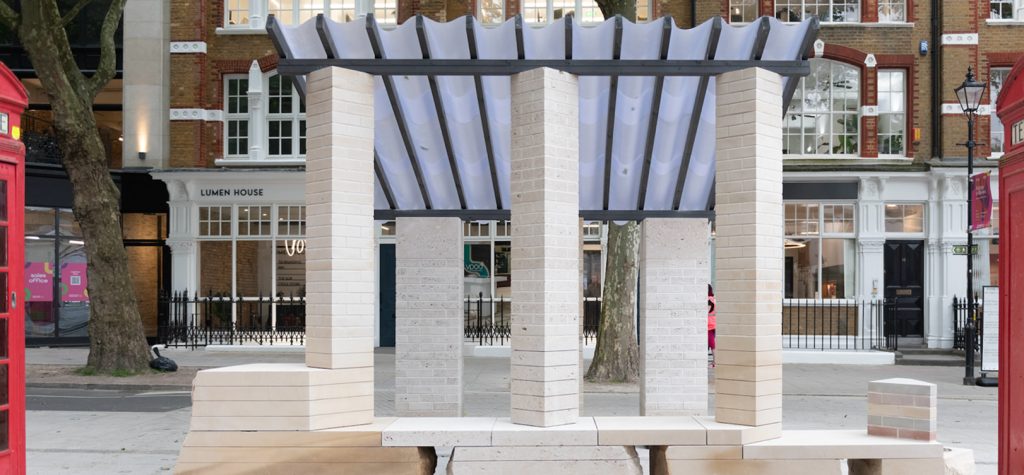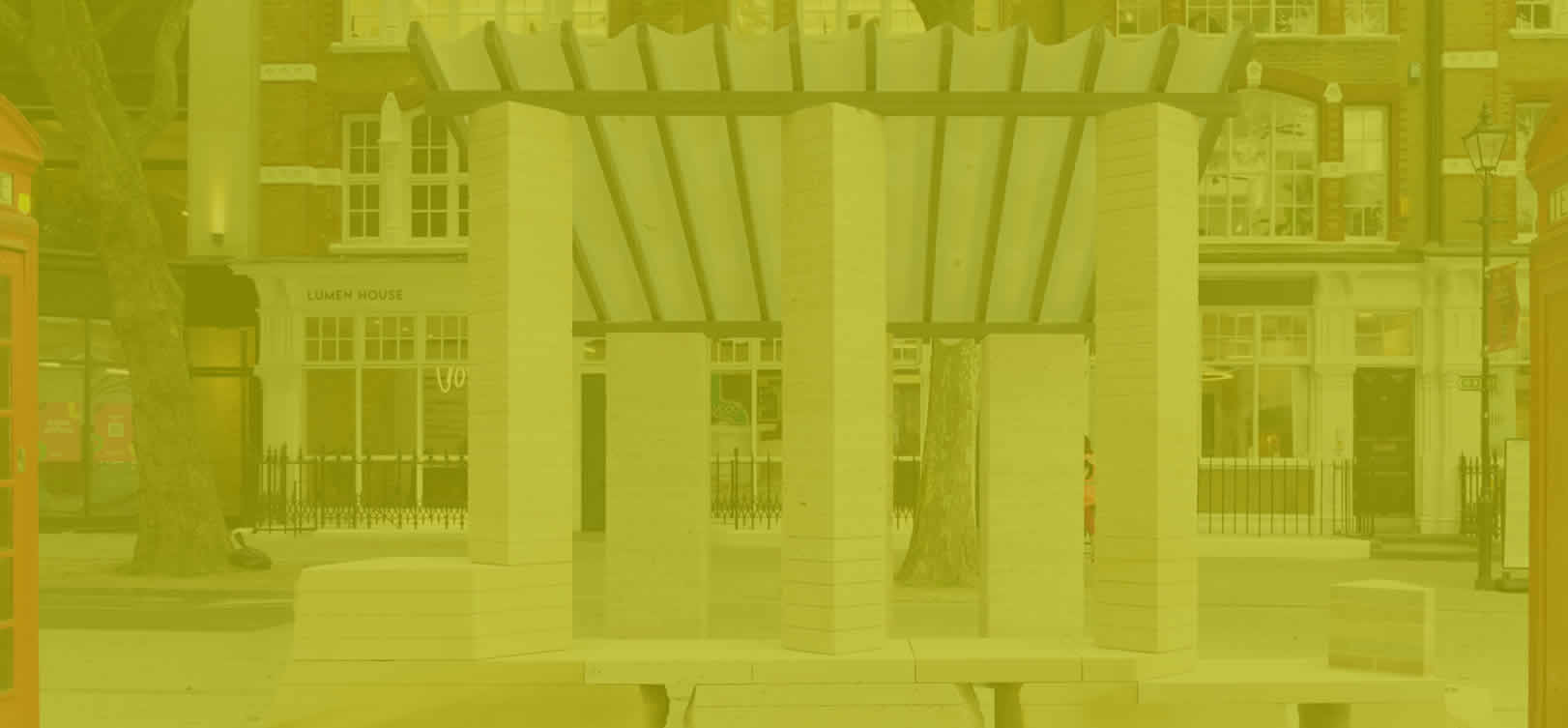
Brick from a Stone, an installation showcasing low-carbon British stone bricks from Albion Stone and Hutton Stone, has appeared between two iconic red London telephone boxes as part of Clerkenwell Design Week 2024. The installation demonstrates the low impact manufacturing journey stone takes to be turned into a brick, and the huge potential stone bricks have as a beautiful low carbon building material.
The 3 metre-tall structure is made up of six columns using a total of just under 900 stone bricks. The carbon footprint of all the stone bricks used in this monumental installation is equivalent to approximately a third of an average laptop. The installation’s embodied carbon is less than a quarter of what it would be if it were built from traditional clay fired bricks.
British stone suppliers Albion Stone and Hutton Stone commissioned London-based architecture practice Artefact to design the installation to celebrate the launch of their new stone bricks. In the past few months, both companies have invested in state-of-the-art machinery to turn ‘unloved stone’ (blocks/slabs of limestone and sandstone with superficial inconsistencies) into bricks.
“We’re turning our ever-growing surplus of so-called imperfect stone into a low-carbon construction material,” explained Marcus Paine, managing director of Hutton Stone. “Any waste is unacceptable in the current climate crisis, so it’s fundamentally the right thing to do.”
“As reducing embodied carbon in buildings becomes a priority, we expect architects to be drawn to the sustainability credentials of these stone bricks,” added Michael Poultney, managing director of Albion Stone. “We have enough ‘unloved’ Portland stone to construct the equivalent of St Paul’s Cathedral in bricks, and we’re now set up to produce a million stone bricks a year. This is just the start.”
Brick from a Stone consists of a colonnade of six columns in two rows with a roof to provide shelter. The production process behind stone bricks starts by slicing up boulders or blocks of stone like a loaf of bread into slabs. These slabs are then cut into strips and finally into bricks. The plinths that support the three slender columns to the rear of the installation reflect this process. Artefact designed the boulder section to double as a table, and the slabs to act as benches to encourage dwell time and to reflect the original form the stone was in before being turned into bricks. The timber-slatted roof is clad with recyclable stone template materials that can be reused.
Plinths at the back of the installation show how boulders of ‘unloved’ stone are cut into slabs, and then into stone bricks.
“We want Brick from a Stone to be a celebration of the variety of natural stone that lies in abundance beneath our feet. Our intention is to showcase stone brick as a beautiful ‘new’ product that will help to decarbonise our buildings and provide an alternative to clay-fired brickwork. The piece hints at the potential to create a new low-carbon vernacular for masonry buildings in the UK” said Daniel Marmot, Director of Artefact.
“As it’s based in Clerkenwell Green, the installation picks up on the history of the site, referencing the nearby horse trough with a drinking bowl for local dog walkers” added fellow Artefact Director Benedetta Rogers.






